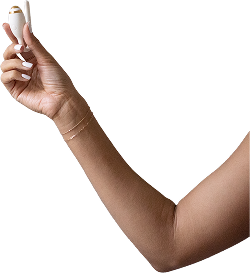Cervical Mucus:
Your Vital Fertility Sign
Our groundbreaking research is redefining fertility tracking by providing insights into cervical mucus—a key fertility indicator. Cervical mucus changes in response to your cycle, creating the perfect environment for sperm to thrive, survive, and meet the egg.
Acting as a gatekeeper during infertile phases, it protects the uterus from harmful bacteria while when fertile it assists sperm on their journey.


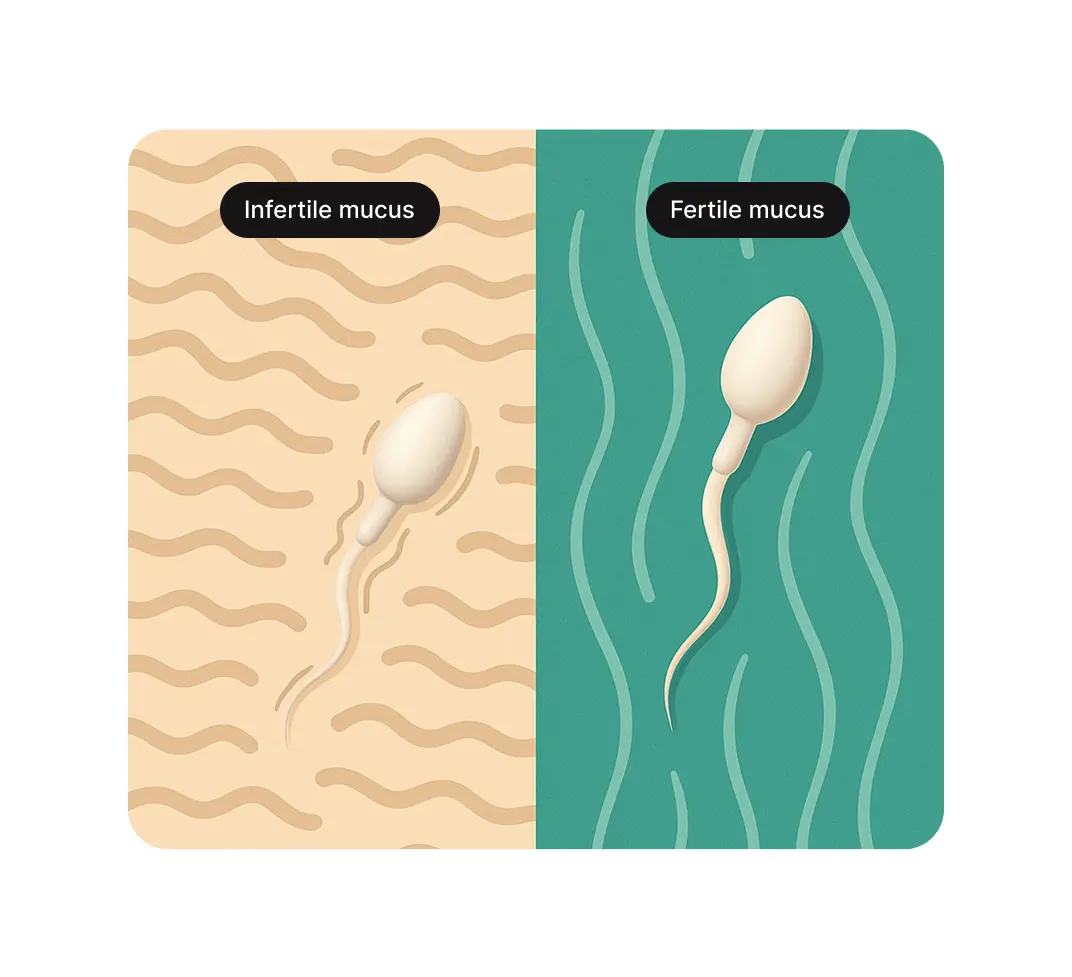
SCIENCE OF CERVICAL MUCUS
Cervical Mucus Is Key For Women's Fertility
- Supports sperm’s survival during your fertile days by reducing the acidity of the reproductive tract
- Filters out abnormally shaped sperms and facilitates travel of normal-shaped sperm on their journey towards the egg.
- Provides the vital nutrients needed to keep sperm alive for up to 5 days while they await the release of the egg.
- In non-fertile phases, cervical mucus is thicker and more opaque, helping to protect the uterus by forming a barrier.
Cervical Mucus Helps You Better Understand Your Fertility
Cervical Mucus Helps You Better Understand Your Fertilitymobile
Timing intercourse based on cervical mucus is more effective for conception than simply timing efforts around ovulation.*
Cervical mucus starts to become fertile before a change in hormones or temperature can be detected making it the superior way to identify all of your fertile days.
Calendar Methods Fail Everyone
In a recent study, calendar-based apps were found to be less than 22% effective at predicting ovulation.* The fertile window can vary significantly from cycle to cycle—by as much as 10 days**, even in women with regular cycles. Calendar methods lack personalized indicators and rely solely on average cycle lengths to make predictions. This approach often leads women to miss some or even all of their fertile days.
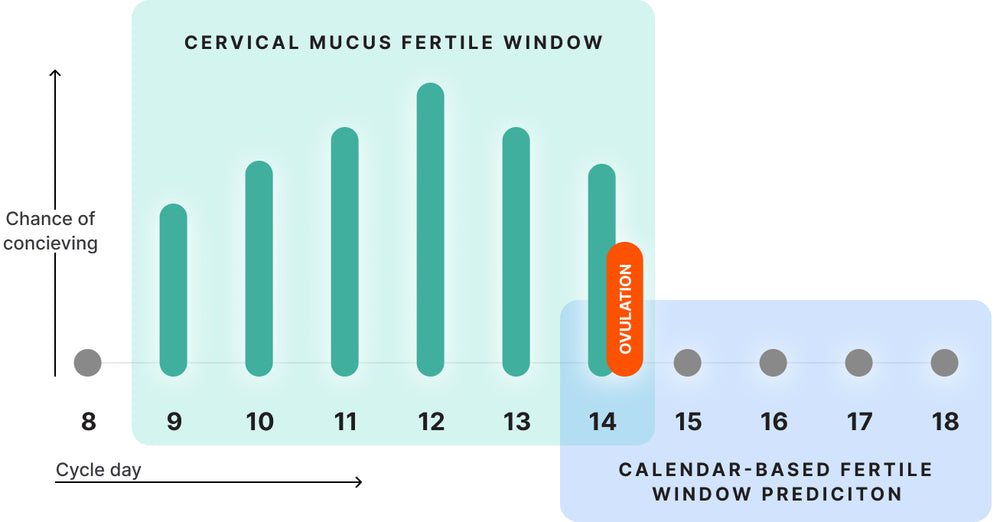
Ovulation Predictor Kits Miss Up To 4 Fertile Days Each Cycle
Ovulation predictor kits (OPKs) detect a surge in luteinizing hormone (LH) which occurs 12-48 hours before ovulation. Your full fertile window extends from 5 days before ovulation occurs. Tracking your fertile window with OPKs may result in up to 4 fertile days missed each cycle.
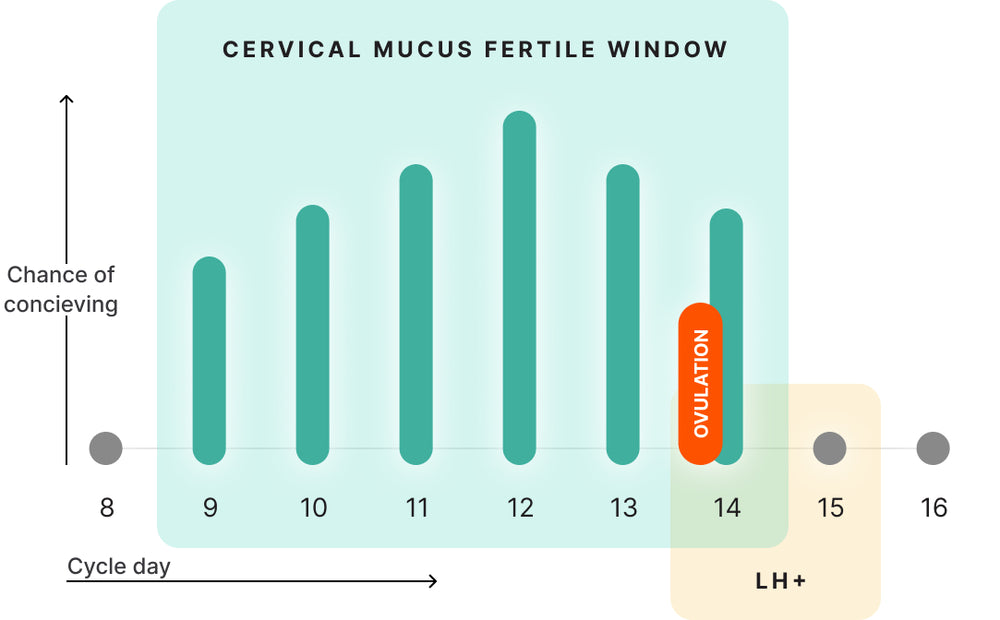
Temperature Rises After Ovulation Is Over
Basal body temperature (BBT) rises after ovulation occurs, making this method unreliable for tracking fertility for women who are trying to conceive. Clinical evidence supports that kegg’s cervical mucus readings can more accurately determine the fertile window than basal body temperature tracking.*
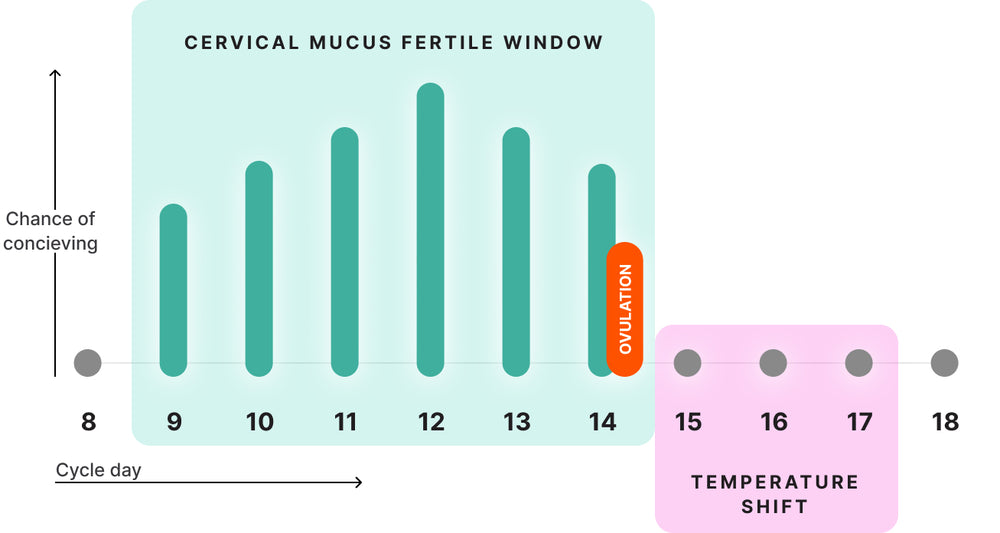
Calendar Methods Fail Everyone
In a recent study, calendar-based apps were found to be less than 22% effective at predicting ovulation.* The fertile window can vary significantly from cycle to cycle—by as much as 10 days**, even in women with regular cycles. Calendar methods lack personalized indicators and rely solely on average cycle lengths to make predictions. This approach often leads women to miss some or even all of their fertile days.

Ovulation Predictor Kits Miss Up To 4 Fertile Days Each Cycle
Ovulation predictor kits (OPKs) detect a surge in luteinizing hormone (LH) which occurs 12-48 hours before ovulation. Your full fertile window extends from 5 days before ovulation occurs. Tracking your fertile window with OPKs may result in up to 4 fertile days missed each cycle.

Temperature Rises After Ovulation Is Over
Basal body temperature (BBT) rises after ovulation occurs, making this method unreliable for tracking fertility for women who are trying to conceive. Clinical evidence supports that kegg’s cervical mucus readings can more accurately determine the fertile window than basal body temperature tracking.*

kegg Studies
Latest Published Research From the kegg Team
This study reveals that kegg's cervical mucus electrical impedance measurements strongly correlate with user-reported cervical mucus observations, offering a highly sensitive and objective method for predicting ovulation and identifying the fertile window, with potential advantages over traditional cervical mucus tracking.
This study demonstrates that kegg's cervical mucus impedance measurements provide a significantly more sensitive, specific, and accurate method for predicting ovulation and identifying fertile days compared to basal body temperature tracking.
This pilot study demonstrates that kegg's electrical impedance measurements of cervical mucus effectively distinguish ovulatory from non-ovulatory phases, aligning with hormonal and ultrasound-confirmed ovulation, establishing kegg as a reliable tool for real-time fertility monitoring.
This study reveals that kegg's cervical mucus electrical impedance measurements strongly correlate with user-reported cervical mucus observations, offering a highly sensitive and objective method for predicting ovulation and identifying the fertile window, with potential advantages over traditional cervical mucus tracking.
This study demonstrates that kegg's cervical mucus impedance measurements provide a significantly more sensitive, specific, and accurate method for predicting ovulation and identifying fertile days compared to basal body temperature tracking.
This pilot study demonstrates that kegg's electrical impedance measurements of cervical mucus effectively distinguish ovulatory from non-ovulatory phases, aligning with hormonal and ultrasound-confirmed ovulation, establishing kegg as a reliable tool for real-time fertility monitoring.
CITATION
Bigelow, J. L., Dunson, D. B., Stanford, J. B., Ecochard, R., Gnoth, C., & Colombo, B. (2004). Mucus observations in the fertile window: a better predictor of conception than timing of intercourse. Human Reproduction, 19(4), 889-892. https://doi.org/10.1093/humrep/deh157
Tabbaa, S., Dai, Y., Fan, W., & Liss, J. (2024). Intra-individual variability of ovulation and luteal phase timing in regular cycles. Presented at the American College of Obstetricians and Gynecologists (ACOG) Annual Meeting, Lady Technologies Inc., San Francisco, CA; University of California, San Francisco, CA; University of Colorado, Aurora, CO.
Johnson, S., Marriott, L., & Zinaman, M. (2018). Can apps and calendar methods predict ovulation with accuracy? Current Medical Research and Opinion, 34(9), 1587–1594.
Tabbaa, S., Dai, Y., Fan, W., & Liss, J. (2024). The effectiveness of cervical mucus electrical impedance compared to basal body temperature to determine the fertility window. Presented at the American College of Obstetricians and Gynecologists (ACOG) Annual Meeting, Lady Technologies Inc., San Francisco, CA; University of California, San Francisco, CA; University of Colorado, Aurora, CO.
